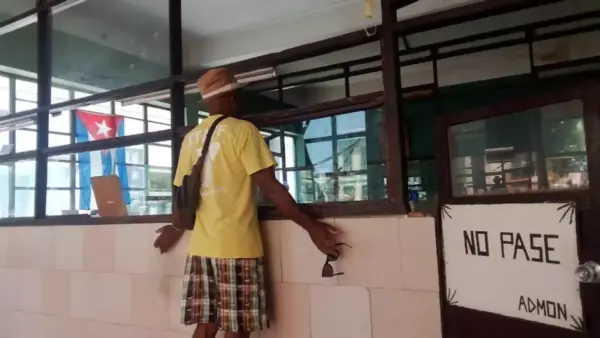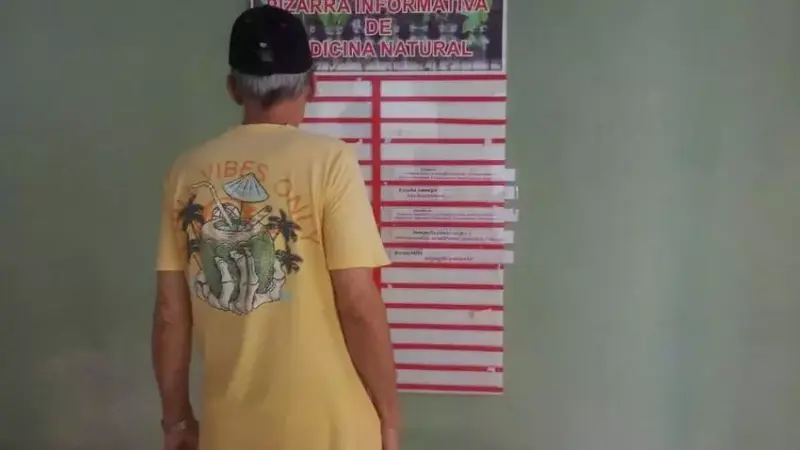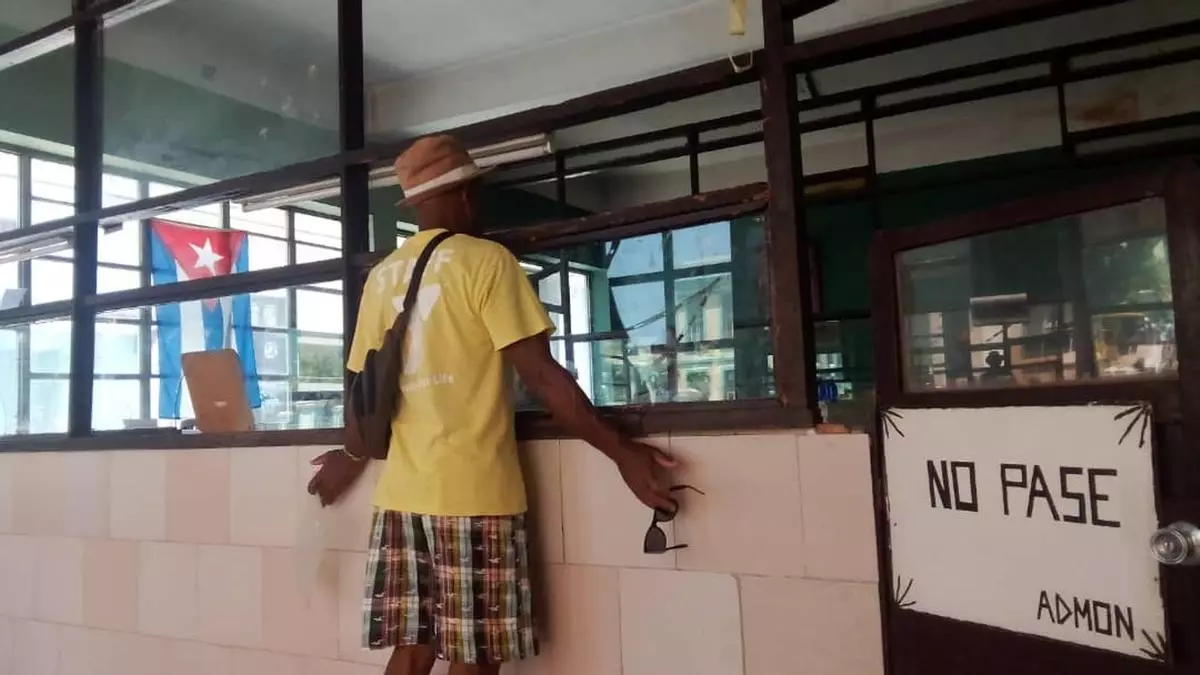 Well-stocked natural pharmacies are now a rarity in Cuba / Photo: 14ymedio
Well-stocked natural pharmacies are now a rarity in Cuba / Photo: 14ymedio
“They have nothing,” laments the customers of plant-based syrups.
By Julio Cesar Contreras (14ymedio)
HAVANA TIMES – A sign in capital letters reading “NO ENTRY” stops Ramon in his tracks as he crosses the threshold of the natural medicine pharmacy on the corner of Milanes and 2 de Mayo Streets in Matanzas, Cuba. It’s not that he was expecting a glittering emporium, but the accumulated dust on the windows, the cardboard signs hanging from a shabby table, and the absent gaze of the sales clerk, absorbed in her phone, give more the impression of neglect than of health care.
“I’m looking for ginger syrup to see if I can control my digestive problems,” he says in a low voice, as if asking for something clandestine. The answer is as harsh as his discomfort: “We don’t have any.” Ramon is not surprised. “If we’re not even producing enough domestic sugar for consumption, what can we expect for the manufacture of natural medicines?” he asks, more resigned than annoyed.
On the shelves where there should be bottles of extracts, envelopes of herbal teas, or vegetable-based creams, there are only handwritten signs, some crooked, others faded by the sun. The low prices—still listed in cents—are a rarity in the midst of the hyperinflation that Cuba is suffering: Escoba amarga at 6.67 pesos, romerillo at 12.67, dried plantain leaf at 3.00. But the tags that have not yet been removed from the bulletin board are like ghosts: products that were once there, that are no longer there, or that perhaps never arrived. The employee, without looking up, murmurs that production is impossible due to a lack of supplies. No bottles, no sugar, no alcohol. No technicians in the lab, which remains closed off there, like a badly preserved museum room.

Miguel, another regular customer, comes in looking for chamomile syrup, the last survivor of its kind left in stock. Suffering from a dry cough and memories, he recalls: “They used to make the medicines right here. There was quite a variety, and they treated people well. Now, there’s nothing left -not even the courtesy of making people feel cared for.” A regular consumer of “Imefasma”—the classic natural extract made from ginger and honey—he laments that there’s no longer even anywhere to bottle it. “They don’t have the little bottles, they don’t have anything,” he sums up. “What good are low prices if there’s nothing to buy?”
The situation at this small pharmacy reflects a larger collapse. According to official data, more than 70% of the country’s supply of basic medicines suffered problems in 2024, and the situation has continued to worsen. Of the 651 products programmed, 461 are out of stock or have limited availability. The problem also extends to natural remedies, previously promoted by the authorities themselves as a “sovereign” alternative to the crisis in the pharmaceutical industry.
In provinces such as Camagüey, officials have publicly admitted that the production of onion, oregano, and honey syrups has collapsed along with the national sugarcane harvest. The annual plan to produce 370,000 bottles of Imefasma has barely been fulfilled by 26%. And in general, only 56% of the planned natural medicines have been produced. Health authorities, who at other times encouraged the planting of medicinal herbs, now see empty pharmacies filling with dust and traditional formulas disappearing from laboratories.
Added to all this is the electricity problem. This pharmacy in Matanzas, like so many others, cannot store anything that needs refrigeration. The phrase “Come back next month” has lost its meaning as the months go by and the shelves remain empty. Some patients go out to the countryside in search of leaves, others resign themselves to homemade infusions. “We have to look for the herbs or die with no cure,” says a woman leaving empty-handed.
First published in Spanish by 14ymedio and translated and posted in English by Havana Times.
Read more from Cuba here on Havana Times.
